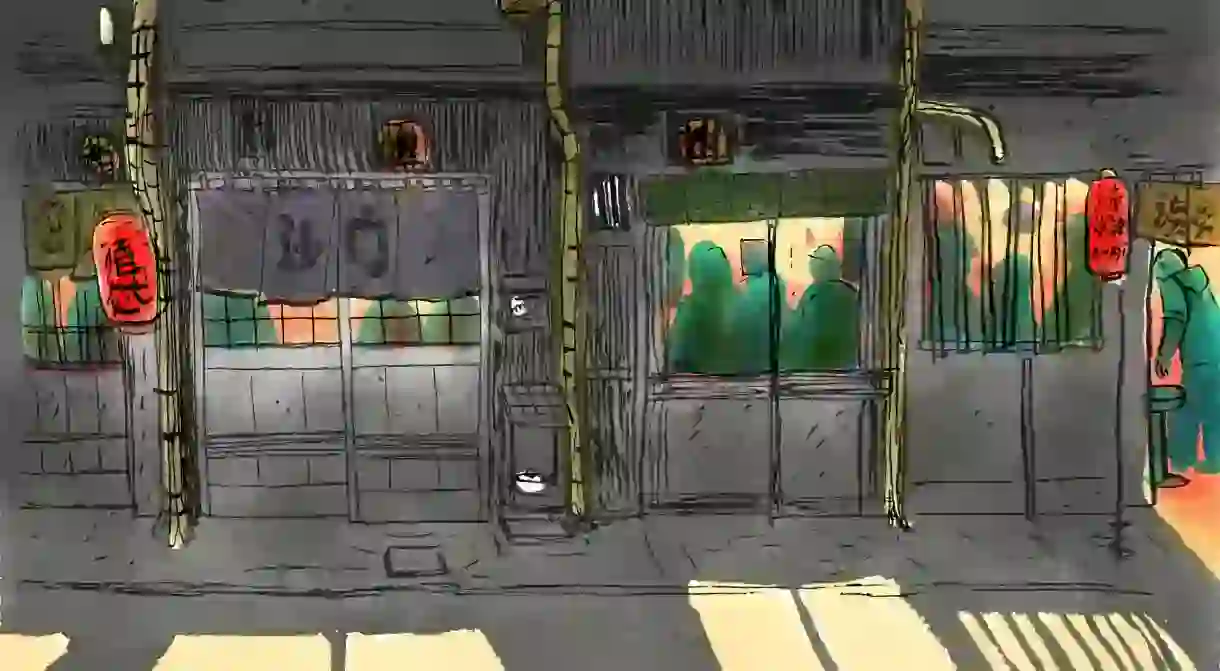Nonbei Yokocho: Tokyo’s Drinkers’ Alley

Tokyo has many yokocho – alleyways crammed with tiny places to eat and drink – and they all have a different character. Illustrator Luis Mendo took his sketchbook (and his friend Javier) to his favourite: Nonbei Yokocho, or “Drinkers’ Alley”.
My friend Javier is from the same small Spanish town as I am, Salamanca. Not many people leave Salamanca to live abroad. Even fewer are great designers and live in New York, as Javier does. I wanted to make very clear to Javier that Tokyo is better than New York – so I took him for a yokocho walking night.
After World War II, when there was a shortage of food – especially rice – in Japan, mainly Chinese- and Korean-run black markets sprang up in alleyways around big train stations. As time went by, the little stores were replaced by bars. Nonbei Yokocho dates from 1951 in its current form and is just two minutes’ walk from Shibuya Station, yet it goes unnoticed by the masses. Once a destination for overworked salarymen, it is now becoming a place to go for young creatives and older people alike.

Each of the 40 or so kiosk-size bars along the two alleys can hold around six or seven people at a time, and they all have a speciality of some kind, whether in the music they play or the food and drinks they serve.

APPRE (Apperu) serves mainly sake, whisky and Kyoto-style food. (The owner learned from a Kyoto chef.) Shiitake mushrooms with wasabi, pumpkin cooked in yuzu, and fried wheat gluten (fu; 麩) wrapped in seaweed are some of their delicacies. The waitress Maki-san serves drinks, moving swiftly in the small space behind the bar.


An art director and her boss arrive to toast hitting a deadline. You can tell by the way she nods at his comments and bows slightly when talking to him that he outranks her, but you can also see that they are good friends.

Some bars have a no-shoes policy. You leave them out on the street – there’s no space inside. The bars are so small the WC is outside and communal to all bars. The slippers at the door are to wear when you go to the loo.

The barman at Saya (莢), which plays Showa-era kayōkyoku music, solves Rubik’s Cube really fast.














